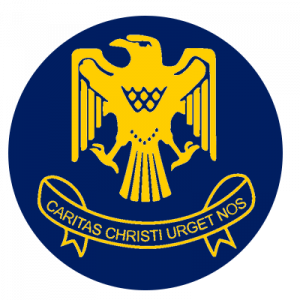
Year 10 Mathematics
10MAT Course DescriptionTeacher in Charge: Mr M. Barr.
The Year 10 Mathematics Programme utilises the Achievement Objectives set at Levels 4 to 6 of The New Zealand Curriculum, building on work already achieved in Year 9.
Testing is done in Years 8 (Orientation Day), 9 and 10 to identify what curriculum levels students are at, and then used to develop programmes that address learning gaps in each class.
The course develops students' Number, Measurement, Algebra and Graphs, Geometry, Trigonometry, Statistics and Probability skills.
Students will be encouraged to develop their numeracy skills by being introduced to, and engaging with a range of mathematical problems.
Students will be assessed by end of topic assessments and an end of year examination.
Homework is done mostly using Education Perfect online.
Course Overview
Term 1
Weeks 1-6 - Number Strand:
- work with whole numbers up to billions,
- rounding
- choose an appropriate approach to calculation (written, mental or digital)
- recognise the (degree of) precision required for the context - significant figures/decimal places
- powers
- fractions, decimals to 3 places, percentages,
- work with simple interest
- ratios
- rates
Weeks 7-8 - Shape Strand:
- recognise symmetry
- transform objects to design for purpose (i.e. enlarge, reflect, rotate, and translate)
- make connections between representations of objects in simple 2D and 3D
- have a way to navigate between points
- describe position and orientation in situations that are flexible in the system being used
Weeks 9-10 - Algebra Strand (Patterns and Graphs):
- work with linear relationships that are represented as graphs or word rules
- recognise unknown values for a given relationship
Term 2
Weeks 1-3 - Shape Strand
- use and interpret results of the measurement (including timetables and time charts)
- select appropriate units and convert between metric measures for the same attribute.
- solve measurement problems in practical contexts: perimeter; volume (cuboids only); area (rectangles, parallelograms, triangles); mass; temperature
Weeks 5-8 - Statistics Strand
- recognise and use appropriate data displays to investigate questions or claims for summary, comparison, and simple time series situations
- interpret data displays using features such as clustering, centrality, spread, unusual pieces of data, frequencies, and patterns
- evaluate statements and representations made by others, based on data that is provided to them
- calculate averages (including the mean)
- recognise and interpret everyday situations involving probability, chance, and simple risk
- use the language of probability to describe outcomes
Weeks 9-10 - Shape Strand
- circles: circumference; area
- volume of prisms
Term 3
Weeks 1-8 - Algebra
- Simplifying expressions
- Expanding
- Factorising
- Solving
- Gradients, intercepts, straight line graphs
Weeks 9-10 Shape Strand
- Angles
- parallel lines
- circle geometry
- Polygons and special quadrilaterals
Term 4
Weeks 1-2 - Shape Strand
- Pythagoras Theorem
- Trigonometry
Weeks 3-4 - Exam Revision and Junior Exams
Weeks 5-9 - Statistics Strand
- Long run frequency
- equally likely outcomes
- Probability trees
- Statistical enquiry cycle
Pathway Contributions and Equipment/Stationery
Each student is required to have a Casio fx-92AU PLUS II Scientific Calculator